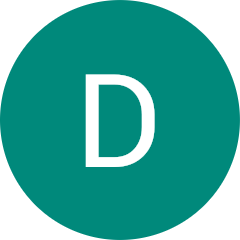
Marketplace mobile apps has been a lifeline for vendors, allowing them to reach a global audience. Furthermore, these applications may provide clients with access to various goods. Marketplace apps such as eBay, Amazon, and Flipkart have been excellent areas to see the interaction between the seller, the marketplace platform, and the customer. Thus, the buying and selling game has been changed by marketplace apps and is still going on. We’ll talk about various topics today connected to developing the ideal marketplace app, one that will surpass the industry’s top performers!
Working up with the Marketplace App Development
Since most consumers are accustomed to using mobile apps today, developers should bear this in mind while developing mobile applications. Today, everyone interested in learning about the process of developing an app should be aware of certain important facts. It mainly entails the methods listed below:
• Analyze the market to see which products are trending
• Identifying with users in mind and conducting user testing
• Testing and mobile application development
• Finally, releasing the application and performing regular maintenance
However, these processes include a great deal of complexity, which we will handle in greater detail below.
• Creating a backend with an administrative interface
When creating the marketplace mobile apps, remember that the app will have three primary components. These are the marketplace backend, the admin UI, and the user interface creation. The marketplace backend is essentially a database where user-generated data is stored. A Marketplace backend also houses the transaction engine and all user functions.
Admin UI essentially assists the admin of the mobile apps in tracking user traffic, keeping orders in order, and monitoring and managing app notifications. This may contain tools like lists, search bars, content pages, maintenance of user profiles, and more! Depending on the device, a user interface may be a website or a mobile app.
Making a mobile app’s user interface is the foremost digital component of developing a mobile app. This includes creating the application to accommodate all of the activities that the user may partake in.
• Constructing the framework
After you’ve settled on the administrative interface, the next step is to build the structure. This is determined by how you wish to interact with the users. This step will aid in identifying the future app’s skeleton. The remainder of the program will be built upon this until it reaches the point of usefulness. Moreover, to enable a seamless user experience, the details of the search engines and the central database must also be worked up.
This also implies creating an email service to facilitate consistent communication with the user. The email service should be designed so that the program can distinguish between legitimate customer IDs and spam communications.
• Developing features specific to the type of operating systems
When building a mobile app, the author should keep in mind that the software should be compatible with Android and iOS devices. The next phase is to develop features specific to the types of mobile devices users use. There are several third-party platforms available that can help with iOS app development services as well as Android app development services. It is essential and inevitable to offer mobile application services tailored to the operating system of mobile devices. Furthermore, the program should be able to handle requests and manage user information using correct profiling features.
• Choosing a revenue strategy for the mobile app
Consider the following scenario: the user has finalized their product and proceeds to make a purchase; however, they need help locating the option to buy and pay for the item. To act as a real-world physical market, any marketplace software must include a feature that accepts payment and allows order fulfillment. Attempt to incorporate the primary payment alternatives into the payment prototype while building the revenue strategy. This can include Paypal, GPay, credit, debit, and other payment options that clients are accustomed to using. Furthermore, the payment gateway should be developed in such a way that it can communicate with the merchant bank to complete the transactions.
• Increasing the number of functions
After you’ve released the prototype, you can spend time tweaking the user and seller interfaces. Furthermore, you can experiment with the new features and utilities. As a mobile app user, you may receive notifications about the upgradation of the app. This is primarily due to developer modifications that add or modify the application from time to time.
Frequently Asked Questions
Are there any shortcuts for developing marketplace apps?
There aren’t any; however, you can reach out to other third parties or request a quote for help with the app development process.
What models can we use to create the ideal marketplace app?
Amazon, eBay, Food Panda, and other big marketplace applications can serve as models.
Can the characteristics of a marketplace app be used to create a healthcare app?
While the core functionality may be the same, the differences in the service would necessitate a distinct model for the healthcare app.




























